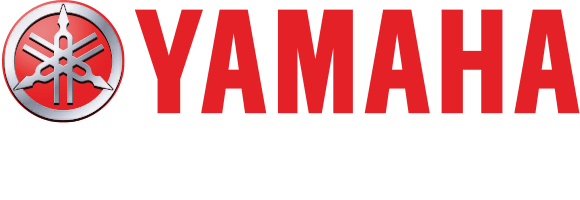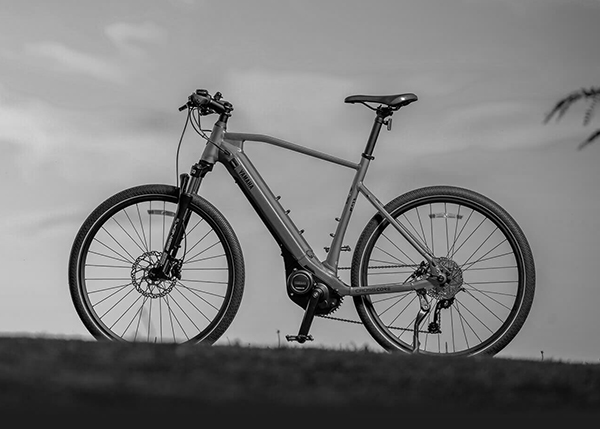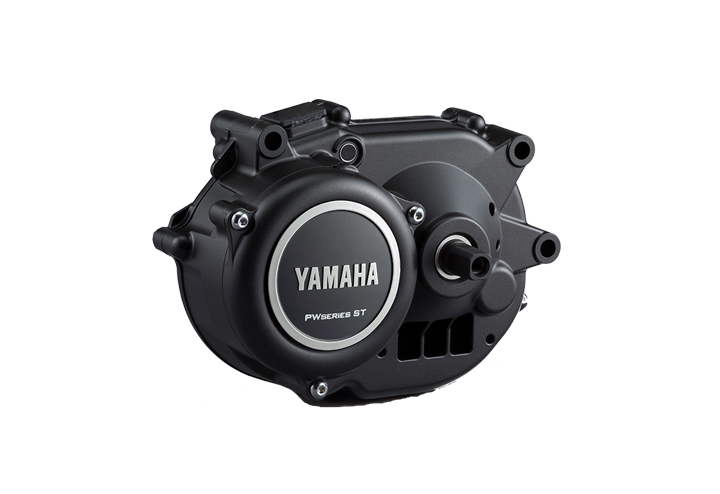The 30th anniversary of the Yamaha e-bike
The electrically power-assisted bicycle, or “e-Bike,” is seeing impressive growth around the globe today, but it was Yamaha Motor that pioneered the first e-Bike back in 1993.
It mounted the first iteration of our new signature Power Assist System (PAS), in which an electric motor is used to provide an assistive force to the pedaling power of the rider in a manner that feels natural and in tune with human perceptions. Simply named the “PAS” after its headline feature, the bicycle was hailed as the first of its kind in the world and enjoyed a successful market debut.
In 2023, we celebrate the 30th anniversary of the Yamaha e-Bike and its systems, and on this occasion, we would like to thank all our customers for their years of support as well as once again affirm our dedication to continue further advancing our technologies and offerings in order to bring customers all around the world e-Bikes that help make every day more fun and fulfilling.
Marking Thirty Years as the Pioneer of the e-Bike
The electrically power-assisted bicycle, or “e-Bike,” today has grown into a mobility category expected to boast some 40 million units in global annual sales in 2023, but it was Yamaha Motor that pioneered the first e-Bike back in 1993.It mounted the first iteration of our new signature Power Assist System (PAS), in which an electric motor is used to provide an assistive force to the pedaling power of the rider in a manner that feels natural and in tune with human perceptions. Simply named the “PAS” after its headline feature, the bicycle was hailed as the first of its kind in the world and enjoyed a successful market debut.
In 2023, we celebrate the 30th anniversary of the Yamaha e-Bike and its systems, and on this occasion, we would like to thank all our customers for their years of support as well as once again affirm our dedication to continue further advancing our technologies and offerings in order to bring customers all around the world e-Bikes that help make every day more fun and fulfilling.
2022
Yamaha-Brand e-Bikes Come to Europe
To bring the Yamaha e-Bike experience to customers in Europe, where the business has centered on the sales of our e-Kits, we launched three new complete Yamaha models: the YDX-MORO 07, Wabash RT, and CrossCore RC. The YDX-MORO 07 uses our Dual Twin® frame design, which houses the new, lighter, and smaller PW-X3 drive unit that produces powerful torque. This All-Mountain weapon also comes with compact control switches, a minimalist display, and top-shelf e-MTB components to improve ride performance. The Wabash RT is a gravel e-Bike that offers the comfort of a road bike with off-road performance for heading off the beaten path, such as to flat trails or gravel roads. The CrossCore RC is do-it-all urban e-Bike model that is equally capable of handling commuting duties to, through, and from the city or when embarking on longer rides through suburbia.
2020
The YDX-MORO Pro Flagship e-MTB Is Released
Yamaha Motor released the YDX-MORO Pro e-MTB in 2020, a flagship model developed under the concept of providing a fun, exciting, and extraordinary riding experience. The compact, lightweight, and powerful PW-X2 drive unit enables steady delivery at high crank cadence and is mounted in Yamaha’s patented Dual Twin® frame. This design splits the frame into upper and lower sections to “cage” the battery, mount the drive unit, and integrate the suspension components, and features excellent chassis rigidity and weight balance. The YDX-MORO Pro also utilizes uniquely Yamaha technologies throughout, such as the mountain-ready front and rear suspension and the Quad Sensor System.
2018
The YDX-TORC e-MTB Debuts and Yamaha e-Bikes Launch in the U.S.
Yamaha Motor launched the YDX-TORC e-MTB model, which featured the top-end PW-X drive unit developed specifically for mountain bike duties. The YDX-TORC provided Yamaha’s signature powerful yet smooth delivery, as well as assist power with a highly responsive feel that quickly reacted to the rider on the pedals. It achieved a level of performance that enabled users to get maximum fun out of the e-MTB riding experience. Yamaha Motor also made an exciting entry into the rapidly growing e-Bike market in the U.S., introducing four new models: the aforementioned YDX-TORC, the Urban Rush drop handle road bike, the CrossCore fitness bike, and the CrossConnect city bike for everyday recreation and utility.
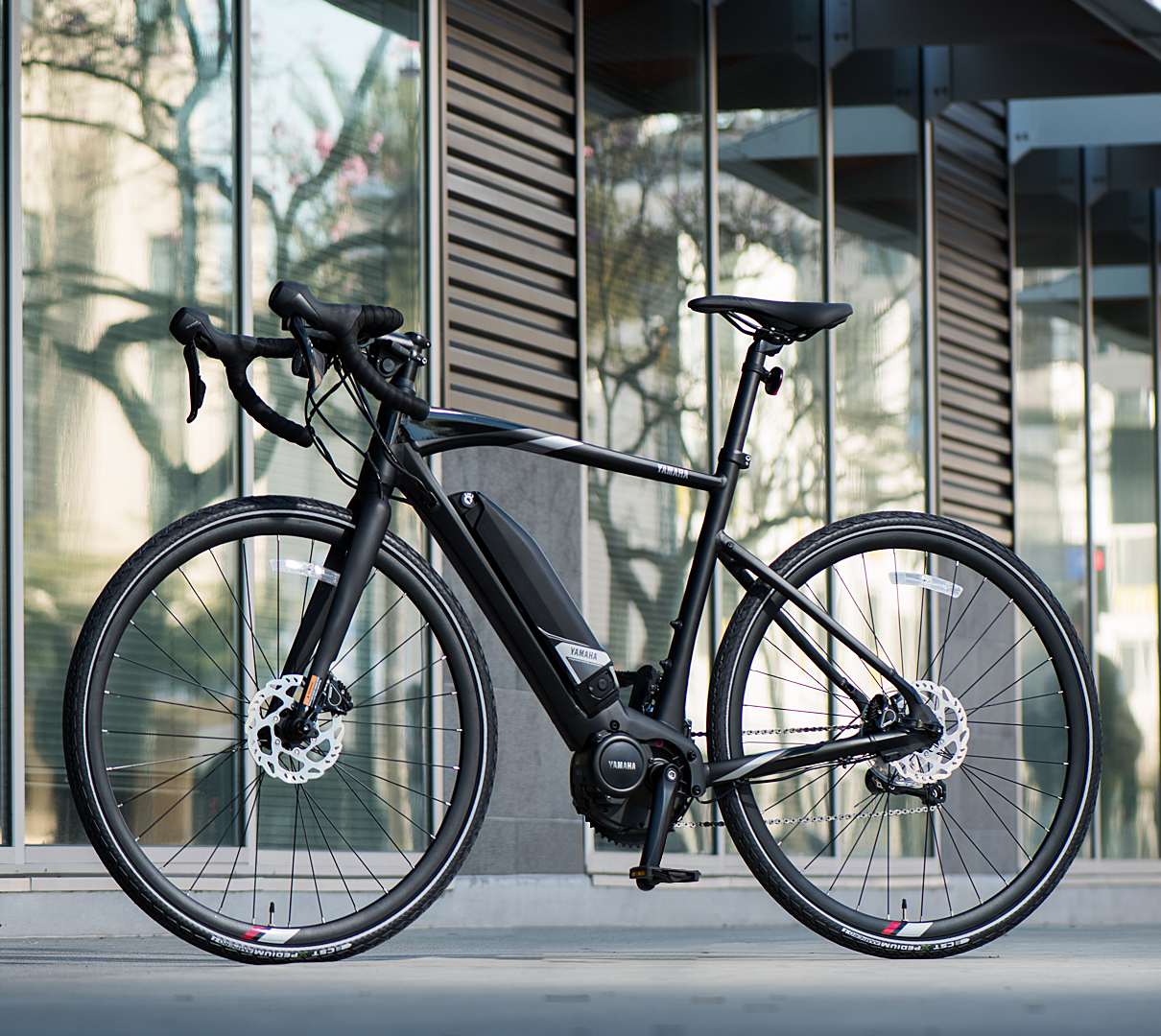

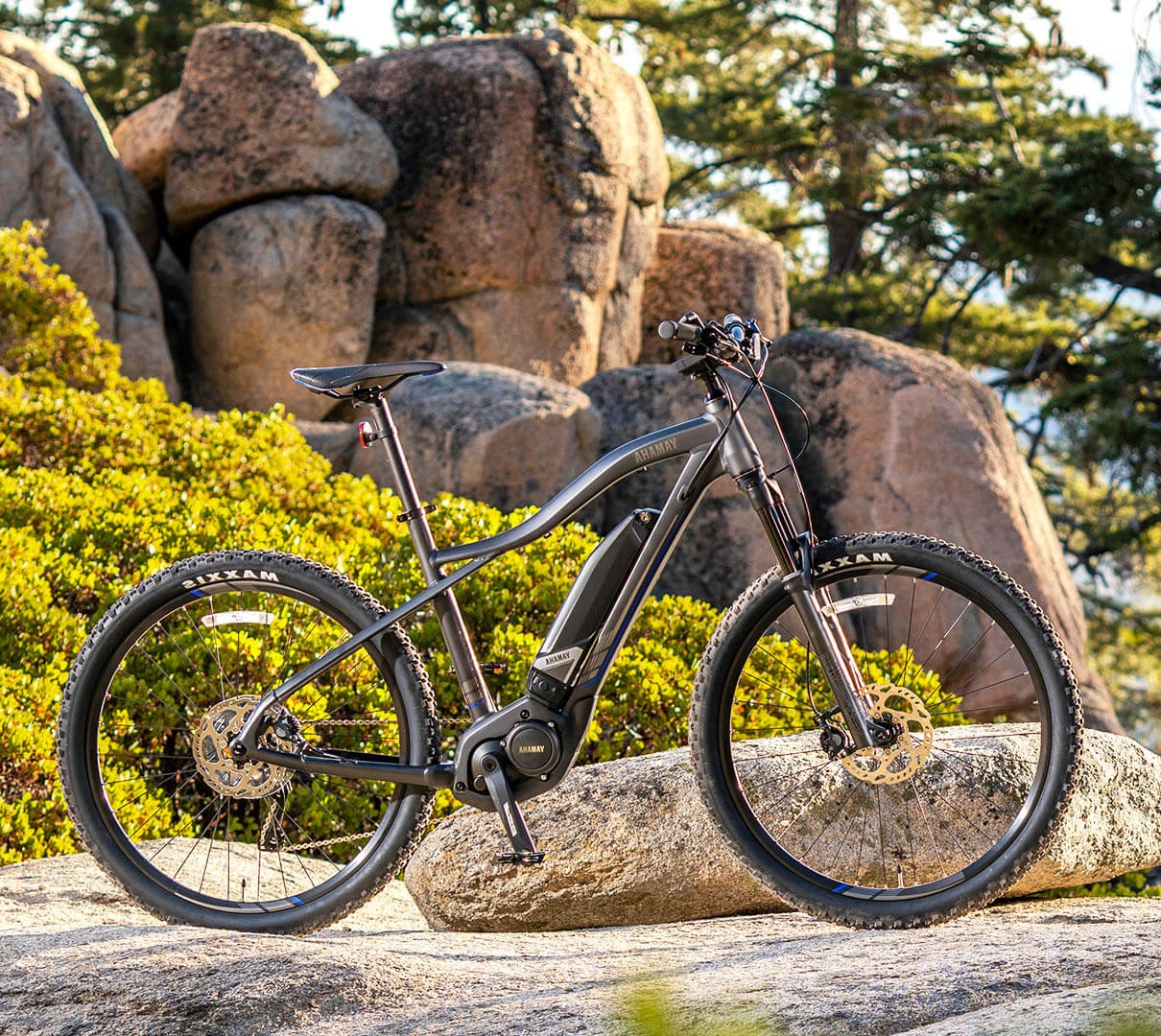
2015
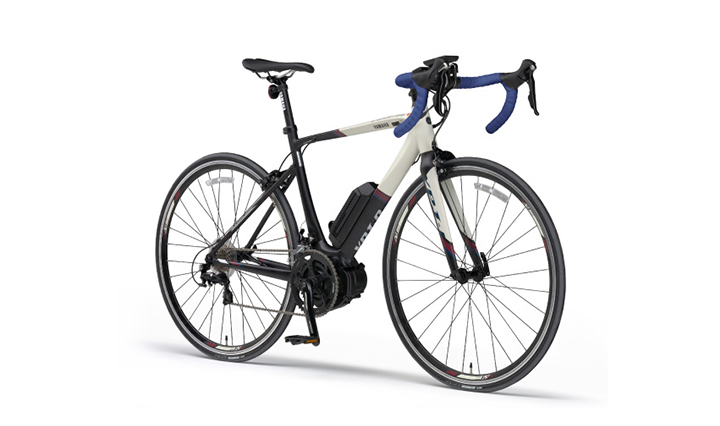
The YPJ-R Series of Sport e-Bikes Hits the Road
Yamaha Motor released YPJ-R electric road bike looking to offer an entirely new way to enjoy the recreational cycling experience, combining the inherent benefits of a high-performance road bike with the advantages brought by mounting a battery and gaining assisted pedaling power. The YPJ-R used the compact and lightweight PW Series drive unit from the e-Bike system kit and featured both light weight and high performance, making it a model that introduced a clear-cut fun factor to the established e-Bike merit of making personal mobility easier. Also, cumulative e-Bike drive unit production reached 3 million units in April that year.
2013

A Compact and Lightweight Center-Mounted Drive Unit
In pursuit of even greater usability, a compact and lightweight center-mounted drive unit employing a brushless DC motor using rare-earth magnets was developed. The new direct-to-chain assist arrangement brought higher efficiency and lower loss, and enabled a smooth but powerful feel with the ride. What’s more, the adoption of a non-contact magneto strictive torque sensor not only reduced resistance felt at the pedals but also provided a light pedaling feel akin to a conventional bicycle when not receiving a power assist. Locating the drive unit near the pedals also aided in balancing the bicycle’s weight, making it easier to move around.
2008
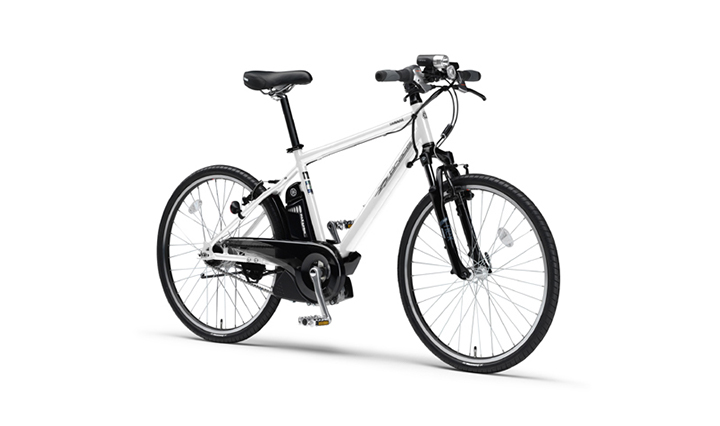
The Brace Debuts and One Million Unit Mark Reached
The Brace model represented a greater emphasis on using e-Bikes for fun. Its parts and features were aimed squarely at high performance, including an 8-speed internal-gear hub, a high-rigidity diamond frame, front suspension shocks, Shimano V-brakes front and rear, semi-slick tires, and an adjustable handlebar stem. The quality design and styling of the bike also served to express its performance orientation. Yamaha Motor also hit the one million mark in cumulative e-Bike drive unit production that year.
2003

A Compact and Lightweight Center-Mounted Drive Unit
In pursuit of even greater usability, a compact and lightweight center-mounted drive unit employing a brushless DC motor using rare-earth magnets was developed. The new direct-to-chain assist arrangement brought higher efficiency and lower loss, and enabled a smooth but powerful feel with the ride. What’s more, the adoption of a non-contact magneto strictive torque sensor not only reduced resistance felt at the pedals but also provided a light pedaling feel akin to a conventional bicycle when not receiving a power assist. Locating the drive unit near the pedals also aided in balancing the bicycle’s weight, making it easier to move around.
1999
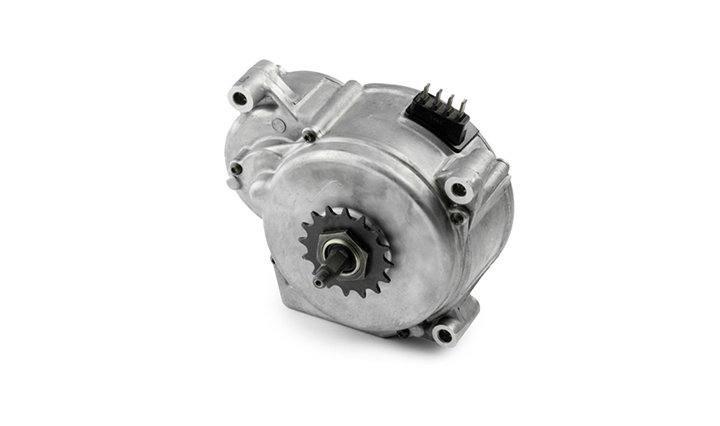
The Intelligent Flexible Energy System (I.F.E.S.)
To bring out the full potential of the nickel-cadmium battery, the Intelligent Flexible Energy System (I.F.E.S.) for battery management was developed. The system’s computer unit enabled status and data sharing among the principal PAS components of the battery, charger, and onboard controller. The ever-changing state of the battery, e.g., current, voltage, use frequency, usage conditions, and battery temperature, is sent to the charger and controller to help make maintaining and managing battery life simpler. The PAS Royal featuring the I.F.E.S. was also equipped with an automatic refresh function to prevent battery memory effect.
1995
A New Detachable Battery Debuts
The PAS C in 1995 featured a new detachable nickel-cadmium battery. Lighter than conventional lead batteries, this battery was also less susceptible to changes in ambient temperature, provided stabler current, and had a higher cycle life, i.e., the number of repeated charges and discharges before performance dropped dramatically. Employing this battery also offered users the choice to charge it while it was still mounted on the bicycle or removing it to be brought indoors for charging, thereby improving convenience.
1993
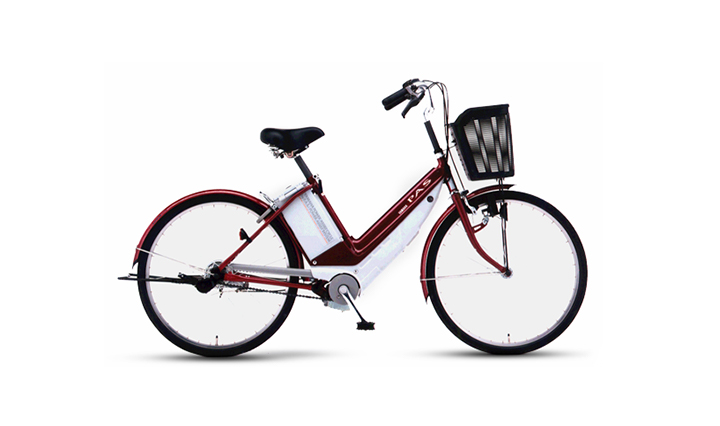
The World’s First Production e-Bike
The original Power Assist System (PAS) was composed of a torque sensor that detects the force being applied to the pedals; a speed sensor to detects the speed of the bicycle in motion; a computerized controller coupled to the electric motor that generates assistive force; the drive unit transmitting that assistive force to the rear wheel; and the battery that powers the system. The electric motor provided a supplementary force nearly equal to that put to the pedals by the rider. Once the model was ready and released to the market, it marked the birth of the world’s first e-Bike.
